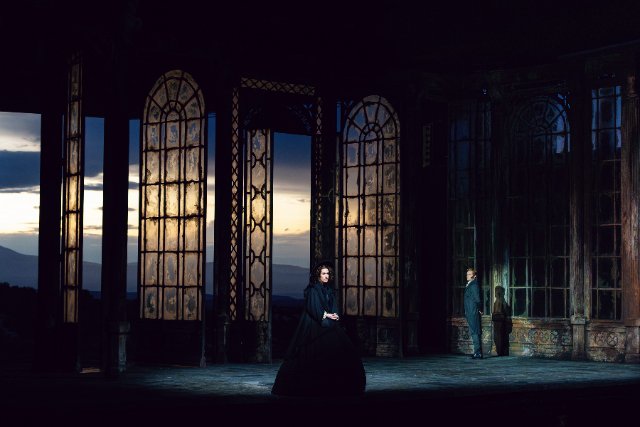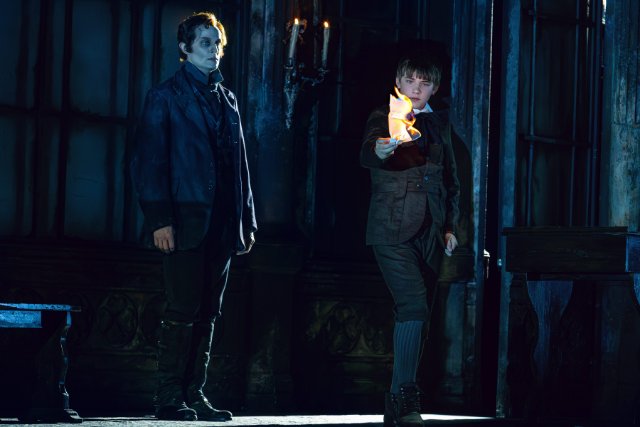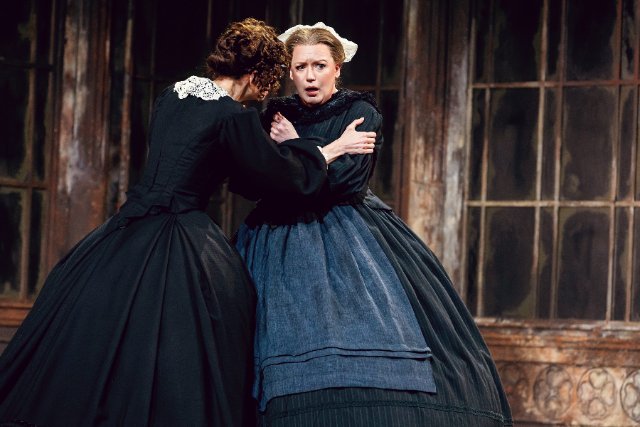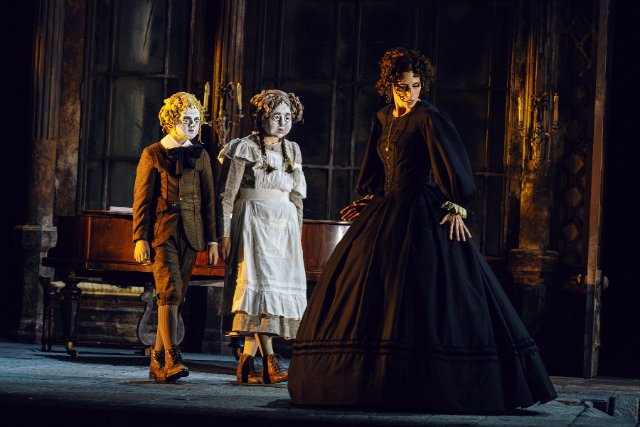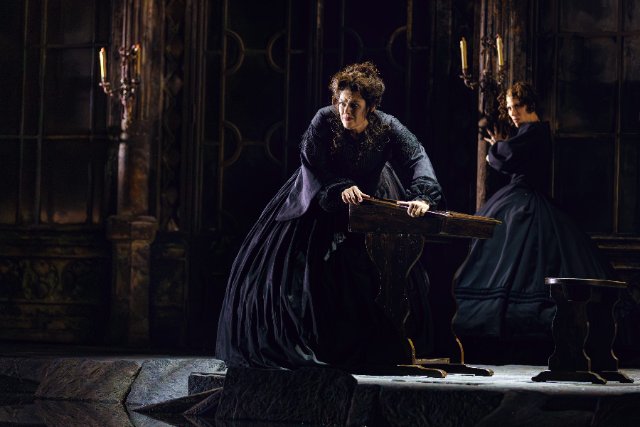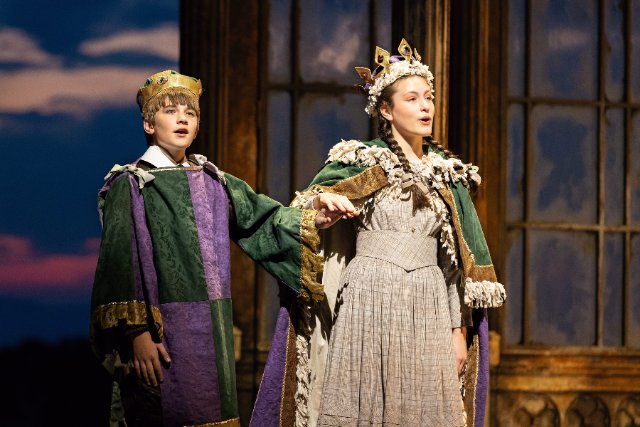The Turn of the Screw
Santa Fe's Excellent Production of the Ghost Story
By: Victor Cordell - Jul 24, 2025
Drama in opera is relatively easy. The plot does the heavy lifting. Other idioms pose additional challenges. The rare class of ghost stories in opera also requires tingling music; good acting; and more precise action and reaction. In that genre, The Turn of the Screw has long been regarded by most aficionados to be the most successful example. Henry James’s novella proves a fine basis for a spooky chamber opera, and Benjamin Britten’s music fits beautifully. Santa Fe Opera’s handsome production brings out the best in the material.
In a turn-of-the-20th-century chronicle in rural England, a governess is hired by a London-based guardian to care for a boy Miles and a girl Flora, children of his late brother. The conditions are that she make all of the decisions concerning their upbringing and that she not contact the guardian. In time, two deceased former employees of the estate, Peter Quint and Miss Jessel, appear to the governess, but not to the housekeeper, Mrs. Grose. Further incidents leave the governess distressed and lead her to question whether the children are possessed by the ghosts and to wonder about her own sanity.
The action takes place on Christopher Oram’s striking set with a back wall of huge, high arched windows and windowed doors. Rather than clear glass, the panes are like a murky isinglass that yields mostly shadows on the other side. A small pond of water on the corner of the stage’s apron into the wing offers optional egress – to a watery grave? Sharp lighting designed by Malcolm Rippeth provides threatening contrasts and shadows, accentuated further as one character, and later another, exits the stage though the water in darkness with only a key light illuminating the face.
The obscurity from the window glass is in keeping with James’s theory of revealing as little as necessary about the people and situations, believing that if readers/viewers know too much, they can be dismissive of the author’s notions, not to mention that sketchiness adds to the mystery. Backstories to embellish characters’ personas are non-existent. And if you’re wondering why the governess’s name hasn’t been mentioned, it’s because neither James nor the opera’s librettist Myfanwy Piper granted her one.
To add to the ambiguity, Director Louisa Muller cleverly keeps the governess onstage throughout, sometimes in a sleep state. Does this suggest that the governess is the narrator of her subjectively perceived story, or that the whole narrative is perhaps a dream? Another reason to wonder if the whole account may be the governess’s delusion is that the only other living adult, Mrs. Grose never sees the ghosts, and it is unclear whether the children sense them.
Meanwhile, should the children be trusted? At times they are playful and seemingly innocent. But each engages in menacing acts. Perhaps because of his “station,” Miles considers himself more adult than he is and refers to the governess with a condescending “my dear.” He even sings a song “Malo” (meaning bad), and asks the governess provocatively, “Aren’t I bad?”
Britten’s composition makes fine use of a chamber orchestra to create the unstable, ominous sense of vulnerability. The score contains several leitmotifs, the most significant being the varying screw theme used in each of the 16 scenes, with its unsettling successions of rising major fourths and descending minor thirds. Conductor Gemma New executes with both brisk and languid precision, often highlighting solo instruments with great clarity as a bassoon warbles, bells tinkle, percussion ticks, and chimes toll as if a death knell.
A high vocal tessitura adds to the tension. The score is dominated by female voices, and the two male voices are a tenor and a treble. In addition to some notable but not memorable arias, several ensembles are the most compelling moments in the music, evidencing agitation among the characters.
The fine cast of four adult players is led by Jacquelyn Stucker as the governess. Her dramatic soprano voice with a steely edge especially fits the dissonant sections of the score, but one of the contradictions in the vocal requirements is that a young and at-risk female would have such a powerful voice. Stucker’s acting also excels as she descends into the spiral of horror.
High marks to the other mature artists as well – Jennifer Johnson Cano as Mrs. Grose, Wendy Bryn Harmer as the ghost of Miss Jessel, and Brenton Ryan as the ghost of Peter Quint. Child performers, veteran Everett Baumgarten as Miles and Annie Blitz as Flora suit their parts well.
Performed at Santa Fe Opera’s fabled sides-open-to-the-elements venue, this production also opens the backstage wall partly to nature. I envy anyone who gets to see this production on a night of thunder and lightning storms, which are common in Santa Fe summers. What a wonderful setting for a ghost story!
The Turn of the Screw composed by Benjamin Britten, with libretto by Myfanwy Piper and based on the novella of the same name by Henry James, is produced by Santa Fe Opera and plays on its stage at 301 Opera Dr., Santa Fe, NM through August 5, 2025.

